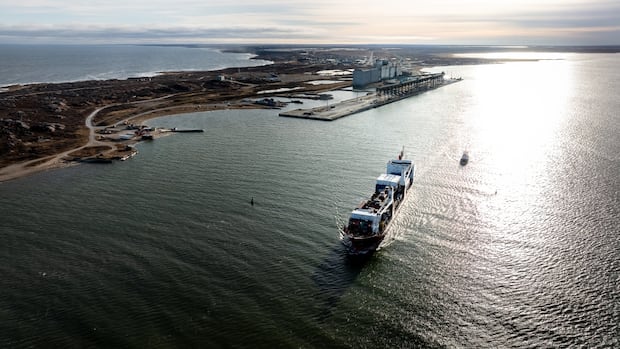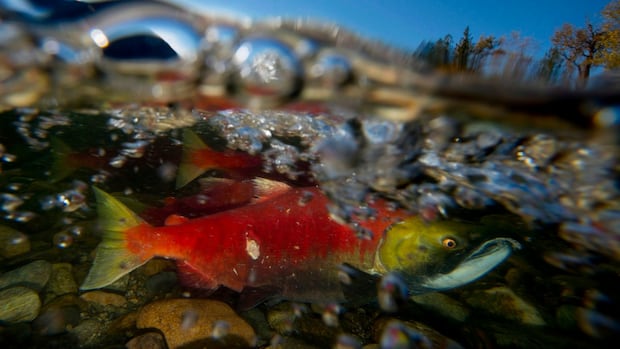Even as firefighters get relief from extreme heat and harsh winds, Alberta’s most dangerous wildfires are continuing to burn near communities under threat.
More than 60 wildfires are burning across the province as of Wednesday. Of these, 23 have no established perimeter to slow their spread and at least seven of these out-of-control fires are considered a current threat to nearby communities.
Around 3,000 Albertans are displaced, with eight communities under evacuation orders as of Wednesday morning. Thousands more remain on evacuation alert, under orders to be ready to leave their homes at a moment’s notice.
Wednesday night, an existing evacuation order in Saddle Hills County expanded because of a fire in the Blueberry Mountain Area.
The order now includes all those located within Township Road 804 and Highway 49, between Range Road 100 and Range Road 95.
Smoke has blanketed skies over much of the province, triggering a swath of air quality alerts and warnings.
Alberta faced a volatile start to wildfire season, but the overall impact has been lighter that what is being experienced in other provinces. Both Manitoba and Saskatchewan have invoked states of emergency to help various levels of government deliver aid as they experience some of their worst fire seasons in recent years.
‘Slow relief’
Cooler temperatures, scattered rain and calmer winds helped firefighting efforts on Tuesday, while the forecast offers relief both to firefighters on the frontline and people struggling to cope with the high levels of smoke, said Environment Canada meteorologist Christy Climenhaga.
A stagnant weather system has allowed a large plume of smoke to pool over much of the province, as well as parts of western Canada and the United States, she said. But a low-pressure system is expected bring a change in winds that will help much of the smoke dissipate by the weekend, Climenhaga said.
“We’re going to start see some slow relief,” she said. “We’re going to start to see those winds coming in from more of that southeast direction, strengthening just a little bit to help push that smoke out of the area.”
Conditions should begin clearing by Friday, with the weather pushing the smoke north and bringing some much-needed moisture to the province.
By Saturday, considerable rainfall is expected in communities across the province, with up to 30 mm forecast in some regions, Climenhaga said.
Kiskatinaw River Wildfire
The change of weather is expected to both help and hinder the fight for crews battling one of most dangerous wildfires in Alberta — the Kiskatinaw River Wildfire, which spread in from B.C.
The wildfire, now straddling the provincial boundary, covers a 21,679 hectares and continues to burn out of control.
Sarah Hall, an information officer with the B.C. Wildfire Service said Wednesday that crews were contending with an inversion, which developed overnight above the fire. The plume of of smoke limited visibility but also calmed the flames.
That “smokescreen” is expected to clear Wednesday as the winds shift, allowing crews to get a better view of where the fire is spreading and flaring, she said.
But as the smoke clears, activity on the fire will escalate, she added.
“Its a bit of a double-edged sword in the sense that it does reduce fire behaviour, but then it can hamper operations due to poor visibility,” Hall said of the inversion conditions.
Crews worked through the night Tuesday to control the head of the fire in Alberta.
Hall said crews in both provinces are also preparing for a major change in the wind direction, which may cause the fire to double back on itself, pushing the flames back toward the southwestern flank in B.C., she said.
“There are times where wind shifts aren’t forecasted and can occur in the field and that is a safety concern, but we are thankful that this is forecasted ahead of time and we can plan around it.”
Hall also urged people keep their distance from ongoing fire operations, and said crews have faced some “interference” from people still recreating inside the evacuation zone.
Crews took advantage of Tuesday’s moderate conditions to work on dozer guards that will help contain the flames while removing fuels from the path of the fire.
As of late Tuesday, no residential homes or outbuildings have been damaged or destroyed within the County of Grande Prairie, where evacuation orders and alerts remain in effect.
It’s a different story on the B.C. side of the boundary. As of Monday afternoon, as many as seven buildings and mobile homes had been destroyed by the fire in the small community of Kelly Lake, B.C., which is home to about 70 people.
Red Earth East Complex
Further north in the heart of Alberta’s boreal forest, a cluster of 11 fires known as the Red Earth East Complex is closing in on several evacuated communities.
One out-of-control fire, now covering 68,565 hectares, is burning 7.5 kilometres southeast of Red Earth Creek and 8.6 kilometres west of Trout Lake, according to the latest update from Alberta Wildfire.
Another blaze within the complex, which has put the community of Peerless Lake under threat, has exhibited extreme fire behaviour in recent days. Now spanning more than 12,660 hectares, it is burning out of control just 10.5 kilometres east of the community.
A fire that burned through Chipewyan Lake, destroying nearly half of the buildings within the community and temporarily trapping a firefighting crew, continues to rage.
According to Alberta Wildfire, it’s burning out of control across more than 133,650 hectares, surrounding the community located about 450 kilometres north of Edmonton.
Residents of Chipewyan Lake, which is part of the Bigstone Cree Nation, have been under evacuation since May 28, the longest among all Alberta evacuees currently displaced.
It’s unclear when they will be able to return as many homes, along with critical infrastructure including the health centre and water treatment plant, were lost to the flames.
Sousa Creek Wildfire
The Sousa Creek Wildfire, burning five kilometres south of the community of Chateh, has more than quadrupled in size since May 30, reaching 41,242 hectares.
Residents of the community, which is part of the Dene Tha’ First Nation have been out of their homes since May 29.
Crews continue to work along the north and northeastern fire perimeter, near Sousa Creek, in attempt to slow the spread.
It is burning 72 kilometres west of the town of High Level and 27 kilometres east of the town of Rainbow Lake.
Respirologist Dr. Samir Gupta says tiny, carbon-rich particles from burning plastic and organic matter can trigger health problems not just in the lungs, but in every system of the body.







